These reading comprehension worksheets are part of Oxford University Press’s Project X Origins library. This comprises a rich and vibrant variety of fiction and non-fiction resources for guided, independent and whole-clas reading.
No matter what book you’re reading in class, use these worksheets to track what’s happening in the plot, new words you come across and characters’ emotions, attributes and relationships.
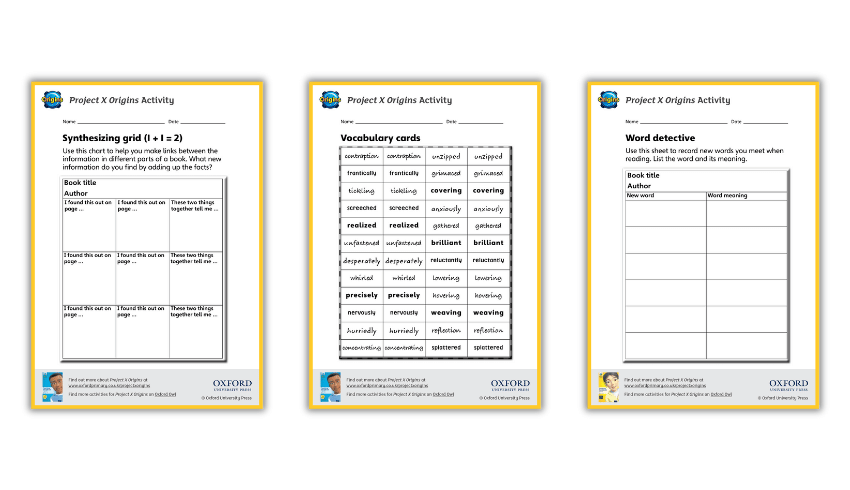
Reading comprehensions worksheets pack contains:
Synthesizing grid
Use this chart to help you make links between the information in different parts of a book. What new information do you find by adding up the facts?
Vocabulary cards
A sheet of 48 vocabulary cards, grouped into 24 pairs.
Word detective
Use these reading comprehension worksheets to record new words you meet while reading. List the word and its meaning.
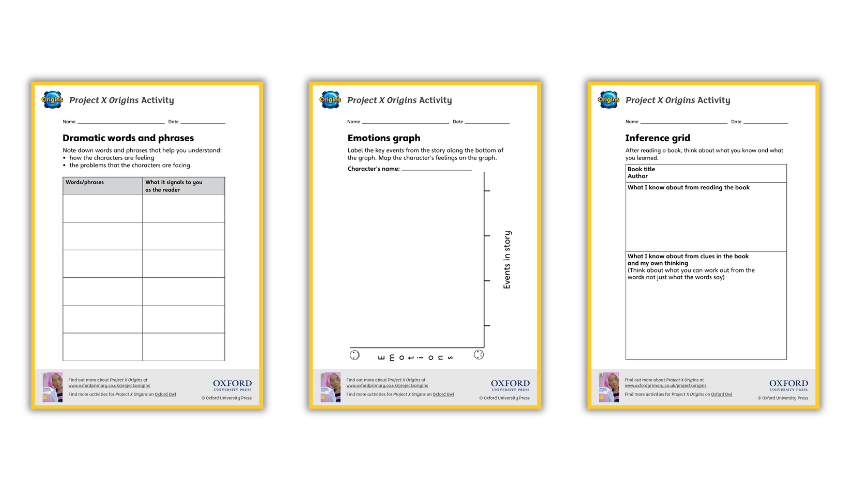
Dramatic words and phrases
Note down words and phrases that help you understand how the characters in your book are feeling, and the problems they are facing.
Emotions graph
Use this blank ’emotions graph’ to map out a character’s feelings as the events in your story unfold. Label the key events from the story along the bottom of the graph, then rate their state, from sad to happy.
Inference grid
After reading a book, use this worksheet to think about what you know and what you learnt. That is, make a note of what you know from clues in the book and your own thinking. Consider what you can work out from the story, not just what the words say.
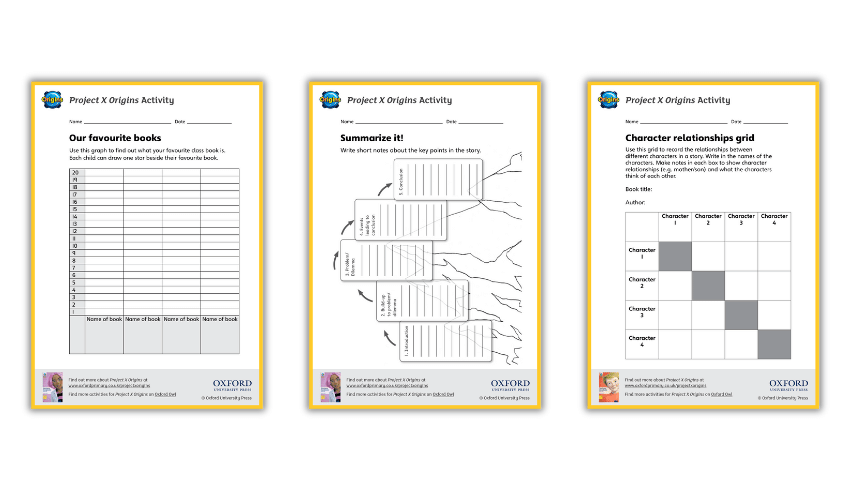
Our favourite books
Use this A4 chart to find out what your favourite class book is. Each pupil can draw one star beside their favourite book.
Summarize it
A comprehension activity sheet containing five text boxes, in which pupils are invited to summarise the key points of a story’s narrative, using a story mountain structure:
- Introduction
- Build up to problem/dilemma
- Problem/dilemma
- Events leading to conclusion
- Conclusion
Character relationships grid
Use this grid to record the relationships between different characters in a story. Write in the names of the characters. Make notes in each box to show character relationships (e.g. mother/son) and what the characters think of each other.
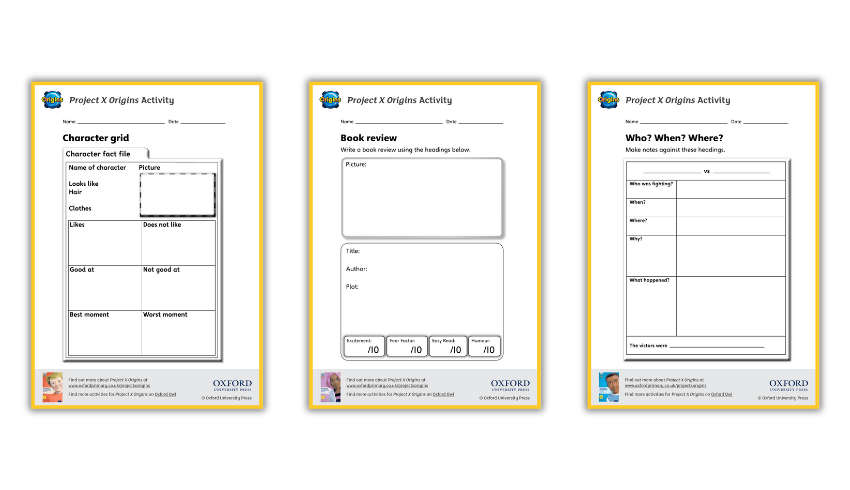
Character grid
This comprehension activity sheet allows pupils to create their own ‘Fact File’ of a book’s character, with details of their preferences, aptitudes and role within the story’s narrative.
Write a book review
A ‘Book Review’ worksheet, with suggested headers and scoring categories.
Who? When? Where?
Make notes against the following headers to chart conflict in a story:
- Who was fighting?
- When?
- Where?
- Why?
- What happened?
- The victors were…
Browse more resources for KS1 reading comprehension and KS2 reading comprehension, including comprehension worksheets.
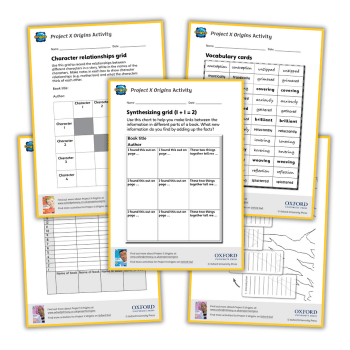
Similar resources
- No Refuge – Graphic novel activities about refugees for UKS2
- Short story writing – Author-led resources for KS1 and KS2
- Christmas activity sheets – KS1 / KS2 fun & educational printables
- Learning gaps – How to ensure no pupil drifts too far
- Writing horror – Write a scary scene with Fear Files: Hide & Seek










